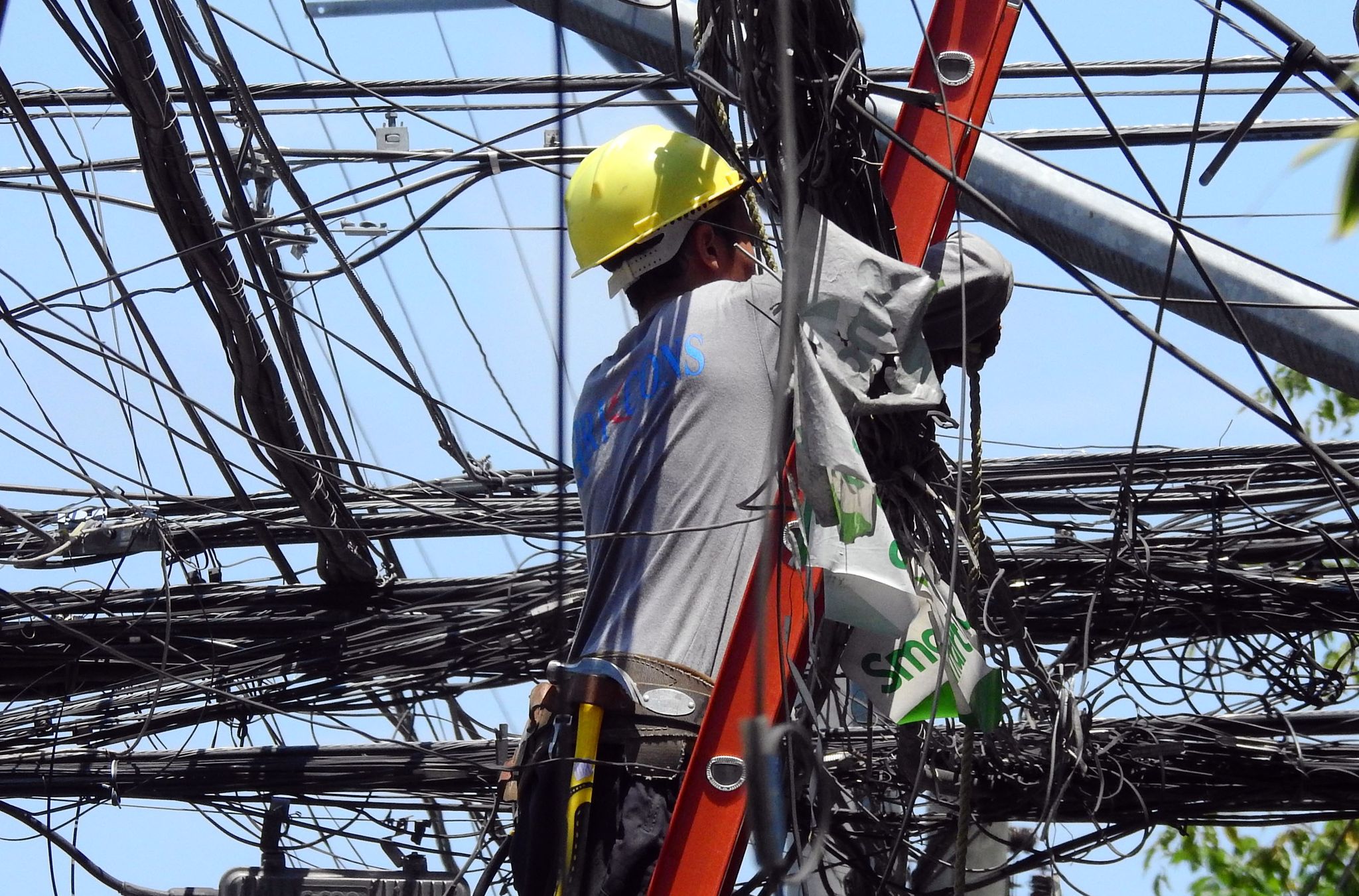THE 20TH City Council approved the “Anti-Spaghetti Wire Ordinance of 2023” on third and final reading during the 45th regular session on Friday, Dec 1, to regulate pole installation and usage in the city.
Section 4 of the ordinance states “no poles shall obstruct and impede any road right of way, sidewalks and alley” within all areas in the city.
The City Engineer’s Office (CEO) or the Department of Public Works and Highways (DPWH) shall notify owners of those affected poles. If deemed necessary, DPWH shall put up additional safety notices and installation transfers.
Transfer of poles including its attachments and installations shall not exceed one month from receipt of the notice of project phase completion issued by the CEO or DPWH. Upon receipt, pole owners are required to immediately inform all utility companies of the pole attachments for removal and transfer.
The city shall follow the “one pole policy,” wherein the number of poles erected in a specific location shall not be more than one with a spacing of 30 meters from each other.
Exceptions allowed shall only include those existing poles that cannot accommodate additional electrical, internet, cable, and other communication wire, and when the pole is within the scope of R.A 11361 or the “Anti-Obstruction of Power Lines Act”.
The removal of existing poles with the least usage shall be determined by the CEO, and the office shall also recommend the transfer of installations to a single dominant pole, and shall order the removal of unused poles.
“Dominant poles are erected and maintained in a specific location to cater to wires and other attachments. Dominant poles must be able to accommodate wires, attachments, and other installations taking into account the minimum safety, elevation, and technical standards as set forth under existing national laws and this ordinance,” the ordinance reads.
All telcos shall be required to remove unused lines and cables, especially dangling and unsafe ones. All utility companies shall submit to the CEO their removal plan for the year including pole number, street names, barangay, and completion date.
Color coding of cables for all utility companies is hereby required for easy identification for removal, repairs, and maintenance.
Vertical clearance limiters shall be installed to prevent the passage of vehicles and trucks with gross height more than what is allowed in the Traffic code of the city.
Within six months from the effectivity of the ordinance, utility companies shall prioritize pole attachment bracket installation and tension limiters along roads with low-lying cables, frequently passed by big trucks, main power, and telco cable pass-through.
It shall be applied to major thoroughfares such as Quirino Avenue, Magsaysay Avenue Quezon Boulevard, Castillo Avenue, Cabaguio Avenue, Maa Road, F. Torres Street, J.P. Laurel Avenue, Whole Downtown Area/Downtown Streets, Davao-Cotabato Road, Daang Maharlika Highway (from Lanang to Lasang), Cabantian Road, among others.
Failure to comply with the standards set in the ordinance shall be served with a Notice of Violation and/or compliance order by the CEO, and failure to comply within seven days from the receipt of the notice shall be subject to paying P300 per pole per day until compliance.
Councilor Bonz Andre A. Militar, information technology committee chair, proposed the ordinance, which was authored by Councilor Diosdado Angelo Junior R. Mahipus and co-authored by Councilor Jessica M. Bonguyan.




